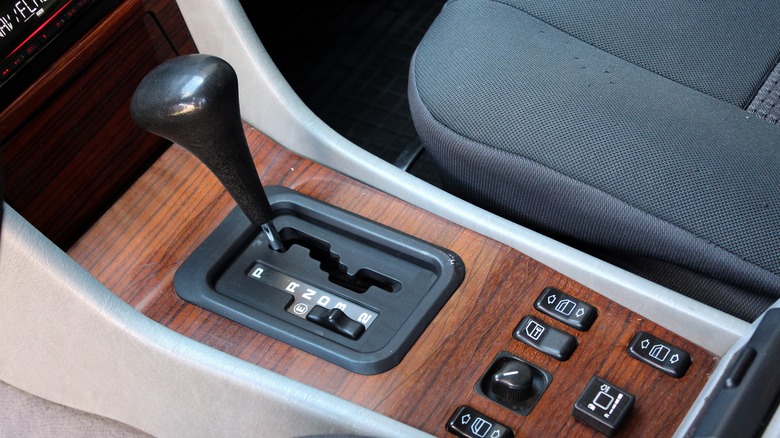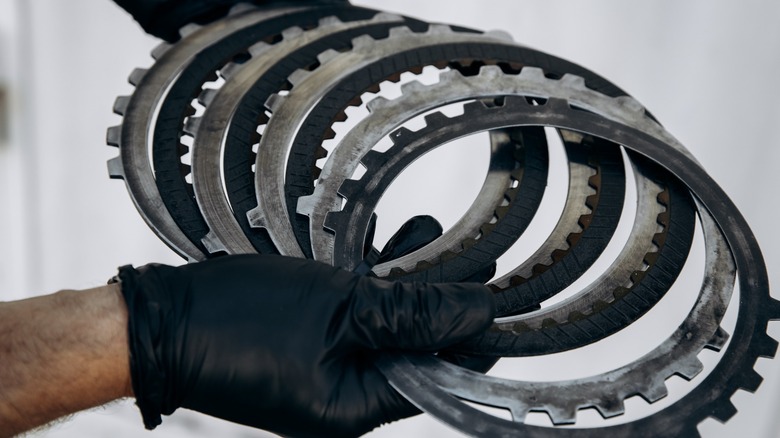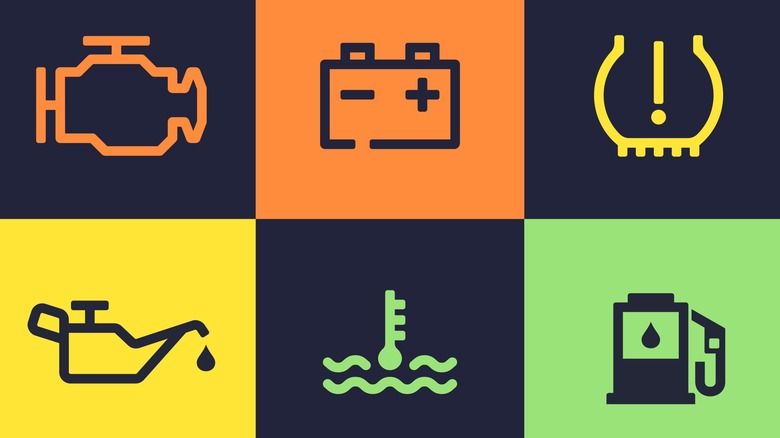
Best Auto Photo/Shutterstock
By Ron King/
Having a basic understanding of automotive acronyms is important. Some, like ABS (Anti-lock Braking System) and DOHC (Dual Over Head Camshafts), represent commonly advertised automotive features, making them familiar even if you don’t fully understand their meaning. Others, such as ECU (Engine Control Unit) or ECM (Engine Control Module) and TCM, which stands for Transmission Control Module, are less common as advertised features, but they’re still important to the operation of your car.
At the most basic level, cars come equipped with either manual or automatic transmissions. While each type has pros and cons, automatics are generally more convenient, easier to drive, and use a TCM. Drilling down for a closer look at automatic transmission types, there are three common variations: CVT (Continuously Variable Transmission), AT (Automatic Transmission), and AMT (Automated Manual Transmission). Since each of these automatic transmission types uses a Transmission Control Module, we’ll focus on how the TCM affects the operation of your car.
What does a Transmission Control Module do?

Iuliia Berezhna/Shutterstock
It’s not critical that you know exactly how an automatic transmission works, but you should understand that it transfers engine power to the drivetrain using various combinations of gears, belts, bands, and/or transmission fluid. The TCM coordinates that complicated process with the rest of your car’s systems and ECU to provide smooth engine power and shifting regardless of the ever-changing demands.
One way to think about it is to imagine your role in driving a manual transmission car. In that role, you’re responsible for applying the clutch, selecting gears, and controlling the timing of shifts, both up and down. An automatic Transmission Control Module does all of that with great efficiency.
A TCM has an advantage over humans when it comes to controlling transmission shifts. It relies on the car’s sensors and ECU to provide data such as vehicle speed, throttle position, engine load, and rpm to select the best gear (or ratio in a CVT) to maintain optimal performance.
What are the symptoms of TCM failure?

Filo/Getty Images
Since the TCM controls how your car’s automatic transmission shifts, most of the symptoms of a failed module center around shifting behavior. Erratic or delayed shifts are a common sign of TCM failure, and a vehicle that refuses to shift from a single gear may be in «Limp Mode,» a definite sign of transmission trouble. In addition, a failing TCM will often cause warning lights to appear on the instrument panel ranging from the generic «Check Engine» light to more specific warnings.
While you should always keep your car’s transmission properly maintained and fluids topped off where applicable, if you’re experiencing irregular shifting, checking fluids is a good place to start. You can also always take the car directly to a professional. If you’re the DIY type, scanning for error codes and checking any wiring and connections associated with the TCM are other solid first steps to identifying the problem.
How much does it cost to replace a TCM?

Ugurhan/Getty Images
Maintaining and repairing wire bundles and loose connections are easy ways to prolong the life of your car, and particularly the TCM. However, if the unit fails, AutoZone estimates the cost of a new unit could range from $200 to $600, depending on the model of your car, with labor adding another $200 at most. RepairPal estimates a slightly higher cost, with the price of the TCM coming in at over $700 and labor estimates around $125.
While changing the TCM is a simple enough DIY project involving only a few small bolts and plug-in wire connections, the new unit will likely need to be programmed to work with your vehicle. Programming requires either advanced skills and equipment or a trip to the repair shop.
Ultimately, it could be cheaper and easier to take your car into a repair shop at the first sign of transmission trouble. While the DIY option for changing a TCM is attractive, it might not solve the problem if the issue is caused by a failing sensor elsewhere in the vehicle. Advanced diagnostic tools can help identify underlying problems, but those costs, coupled with the likelihood of TCM programming, eat into any savings found with the DIY option.